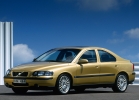Test drive Volvo S60 2000 - 2004 sedan
We measure prestige
What modest cars of famous brands are capable ofWe can say that the peak of popularity in these cars is ahead: after all, they will be produced for at least another five years. Nevertheless, for the BMW, the company has already outlined a small facelifting. The rest to engage in lifting early had nothing to become obsolete yet.
 Let's remember the prestige. Marketers have long determined what this vague, at first glance, concept depends on. Here it is unnecessary to talk about fashion, style, quality all this is implied. The main name of the manufacturer, brand, brand. Emblem and nameplate on the trunk. This is not taken away from our trinity.
Let's remember the prestige. Marketers have long determined what this vague, at first glance, concept depends on. Here it is unnecessary to talk about fashion, style, quality all this is implied. The main name of the manufacturer, brand, brand. Emblem and nameplate on the trunk. This is not taken away from our trinity. The popularity of Mercedes in the comments does not need these cars unmistakably recognized on our streets a decade ago. From socialist times, Volvo has been known since socialist times, the reliable Swedish tanks of the 240th series preferred foreign diplomats. BMW also made his image in Russia in the early nineties one of the first. This is the main reason why Audi, Lexus and Saab did not fall under the cap of our test, popularity came to them later.
They meet on clothes
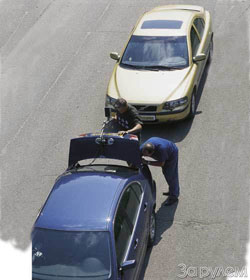 The latest C-class looks like the flagship of the model range of the S-class Mercedes-Benz. Well, there is nothing shameful about that. On the contrary, gives greater solidity.
The latest C-class looks like the flagship of the model range of the S-class Mercedes-Benz. Well, there is nothing shameful about that. On the contrary, gives greater solidity. Generally speaking, a large -scale factor is an important thing. Although the compact car is similar to the representative, it is not at all a reduced copy, and the proportions are completely different. This is true for all three test machines. The three BMW resembles the fifth series cars, Volvo S60 is similar to the S80. It's good or bad another question. It is much more important that they are not similar to each other, and Volvo is especially distinguished. Its originality is intensely emphasized by elements of style: a shoulder-filament Swede with the original shape of the roof and rear lights at first glance is accurately defined as a foreigner in relation to the German pair. Mercedes and BMW are similar in silhouette, but vary in the shape of a roof, headlights, lanterns. They are accurately recognized by person, but at the sight of the side, individuality is not such a bright related layout and aerodynamics dictate their rules. One way or another, each of the cars demonstrates moderately fashionable style, nationality and excellent work of designers.
And not only designers, the quality of assembly and coloring at stratospheric height. Although, if you arouse a magnifying glass and a ruler, the championship will have to be disputed. The BMW and Volvo assets have impeccable coloring, but there are small mismatch of body panels and the uneven cracks. In the Mercedes, in the perfect body, in places there is a light shagrin manifested by a dark violet tint of paint.
A good interior of the eye rejoices
 And not only. It is pleasant to spend time both driving and in a passenger place. Although the dimensions and purpose of our experimental ones make it first of all to be considered by their cars for the driver, the convenience of passengers is also important. Leader in size of the Volvo salon. On the front chairs, there is enough space in it even very tall people, very spacious in width. A slight minus of the driver's right leg touches the central console. Combined upholstery (leather+fabric) with bright inserts on the seats and doors makes the wolvo salon the warmest and most domestic from competitors. At the same time, soft, but effective lateral support in the driver's place goes well with non -valid upholstery material.
And not only. It is pleasant to spend time both driving and in a passenger place. Although the dimensions and purpose of our experimental ones make it first of all to be considered by their cars for the driver, the convenience of passengers is also important. Leader in size of the Volvo salon. On the front chairs, there is enough space in it even very tall people, very spacious in width. A slight minus of the driver's right leg touches the central console. Combined upholstery (leather+fabric) with bright inserts on the seats and doors makes the wolvo salon the warmest and most domestic from competitors. At the same time, soft, but effective lateral support in the driver's place goes well with non -valid upholstery material. 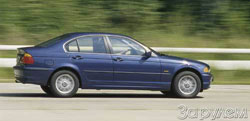 The compact BMW is inferior to the Swede only a little width, but it is the only hatch in the roof in our test, and therefore has about 40 mm of the excess height of the cabin. As a result of the room, there is no less, and you can sit higher by saving the space for the legs of the rear passengers. Unlike the previous, third series, the current one is noticeably more spacious, and a thoroughly verified interior in style is a subtle compromise between the cockpit and the office. It is precisely an expensive office, and not a rich living room, for a combination of black plastic, black skin, black shiny inserts and chrome pens cannot be called warm. But the preferences of Russian customers are just such: so that solid and considerable.
The compact BMW is inferior to the Swede only a little width, but it is the only hatch in the roof in our test, and therefore has about 40 mm of the excess height of the cabin. As a result of the room, there is no less, and you can sit higher by saving the space for the legs of the rear passengers. Unlike the previous, third series, the current one is noticeably more spacious, and a thoroughly verified interior in style is a subtle compromise between the cockpit and the office. It is precisely an expensive office, and not a rich living room, for a combination of black plastic, black skin, black shiny inserts and chrome pens cannot be called warm. But the preferences of Russian customers are just such: so that solid and considerable.  The Mercedes-Benz, oddly enough, turned out to be an outsider his interior below and the rest. The design of the front panel enhances the impression of Kokpit, and the finish is also a black and white cage for Kevlar. Nevertheless, four adults will accommodate with a worthy three -beam star with comfort. True, at the back is better sitting a low ceiling close. But the range of adjustments of the front seats inspires genuine respect, both in length and in
The Mercedes-Benz, oddly enough, turned out to be an outsider his interior below and the rest. The design of the front panel enhances the impression of Kokpit, and the finish is also a black and white cage for Kevlar. Nevertheless, four adults will accommodate with a worthy three -beam star with comfort. True, at the back is better sitting a low ceiling close. But the range of adjustments of the front seats inspires genuine respect, both in length and in height: in the lower position, the pillow almost goes to the floor, so even a high driver is barely visible because of the steering wheel.
Theoretically, behind the wheel of a Mercedes could well have a basketball player of 2.12 m! For comparison: BMW 2.09 m, volvo 2.06 m.
Let's look into the trunk, because there should be enough space here so that suitcases and bags do not interfere with enjoying the silence and comfort of the cabin. The leader again the Swede is more and more convenient than that of the Germans, and in addition, it transforms due to the seat back in parts. Mercedes Second, Bavaret, alas, the last.
ENGINEERING
 It is probably not worth reminding that Mercedes and BMW cars of the classic layout, and Volvo front -wheel drive. The power of all engines is almost equal, but the designs are noticeably different. Under the hood of a Mercedes there are only four cylinders and two liters of working volume, but a deficiency of power is not felt by the drive compressor allows you to achieve the characteristics of the torque and power comparable to the 2.5-liter six. There is an option with a hopeless six 2.6 liters, but under the terms of customs, a car with a boost is more profitable. The Volvo has a five -cylinder motor, located transversely, 2.4 liters of working volume, in BMW, in BMW, a classic in -line six with a volume of 2.2 liters, but it is only a little inferior in a torque.
It is probably not worth reminding that Mercedes and BMW cars of the classic layout, and Volvo front -wheel drive. The power of all engines is almost equal, but the designs are noticeably different. Under the hood of a Mercedes there are only four cylinders and two liters of working volume, but a deficiency of power is not felt by the drive compressor allows you to achieve the characteristics of the torque and power comparable to the 2.5-liter six. There is an option with a hopeless six 2.6 liters, but under the terms of customs, a car with a boost is more profitable. The Volvo has a five -cylinder motor, located transversely, 2.4 liters of working volume, in BMW, in BMW, a classic in -line six with a volume of 2.2 liters, but it is only a little inferior in a torque.  But with pendants complete unanimity. In front of the racks of McEferson, complex multi-links behind. Apparently, this is the most successful way to combine decent comfort and excellent handling. Having experimented with a double -leaf front suspension on the previous generation of compact cars, Mercedes essentially returned to the scheme of one hundred ninety, exchanging excessive comfort for demonstrative sports.
But with pendants complete unanimity. In front of the racks of McEferson, complex multi-links behind. Apparently, this is the most successful way to combine decent comfort and excellent handling. Having experimented with a double -leaf front suspension on the previous generation of compact cars, Mercedes essentially returned to the scheme of one hundred ninety, exchanging excessive comfort for demonstrative sports. 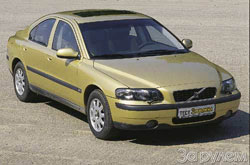 However, in no car you will have to rely exclusively on the chassis everywhere to curb the car to the driver, electronics helps. The most advanced ESP system on Mercedes, simpler on BMW and Volvo; However, the front -wheel drive car needs an electronic UP less. And, of course, the extreme reserve is passive security. Each car has at least six pillows. Volvo and Mercedes offer inflatable curtains in case of a side strike or tipping, a white Bavarian sausage is hidden on BMW in the front racks, as German colleagues dubbed an oblong pillow for the head.
However, in no car you will have to rely exclusively on the chassis everywhere to curb the car to the driver, electronics helps. The most advanced ESP system on Mercedes, simpler on BMW and Volvo; However, the front -wheel drive car needs an electronic UP less. And, of course, the extreme reserve is passive security. Each car has at least six pillows. Volvo and Mercedes offer inflatable curtains in case of a side strike or tipping, a white Bavarian sausage is hidden on BMW in the front racks, as German colleagues dubbed an oblong pillow for the head. Quickly and smoothly
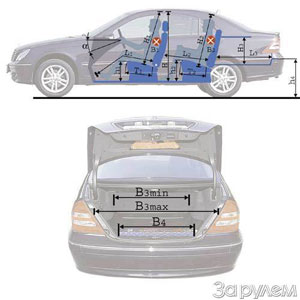 This is how a good car should move. Great dynamics, brakes and handling. Plus low noise and suspension comfort. Who will we start with?
This is how a good car should move. Great dynamics, brakes and handling. Plus low noise and suspension comfort. Who will we start with? Mercedes offers high smoothness in combination with high energy intensity of the suspension. There are no problems with noise either. Although someone may not like the sound of the supercharger at full speed, but this high-frequency pulsating ringing occurs after 4500 rpm. And how does the automatic gearbox cope with its duties? Not bad, but switching to a full throttle could be softer.
On a winding mountain path or autobahn, the Mercedes steering wheel is a standard of understanding, in the peak of the Bavarian competitor who was driven by small efforts. But in terms of setting up the Mercedes chassis, not so perfect. Although the car is notating and vividly reacts to control, in corners to the limit the car willingly slip out from the trajectory, almost without reacting to the discharge of gas. Perhaps this is the fault of the equipment with a suspension for bad roads with increased road clearance. It seems to be sharpened and shock absorbers can cope with the diagonal swing of the car during slipping.
However, there is a minus and more genuinely the dynamic qualities of a Mercedes did not reach the declared, although subjectively this is not noticeable. It’s hard to say, it is difficult to say the blame of the hot weather, high atmospheric pressure or the 95th (instead of the 98th). Moreover, competitors showed the results a lot below the promised. Objectively different: Mercedes is the most difficult of three. This is not able to correct either aerodynamics or well -chosen gear rates that provided him with the highest maximum speed.
 BMW is almost the opposite. The steering in the German taste, for a shaving flight for an autobahn at 160180 km/h, is accurate, but empty in feedback at small angles. On the mountain road, the BMW steering wheel is also not as good as it was on the previous model. But the chassis works like a clock: a little cooler is a turn or sharper, a gas reset, the car immediately goes into sliding with all four wheels, intensively losing speed. The retribution for this is traditionally the smoothness of the course is the worst in our Trinity. There are no complaints about the work of the gearbox here, but the selection of gear rates causes easy annoyance: the maximum speed has failed somewhere between the fourth and fifth gears.
BMW is almost the opposite. The steering in the German taste, for a shaving flight for an autobahn at 160180 km/h, is accurate, but empty in feedback at small angles. On the mountain road, the BMW steering wheel is also not as good as it was on the previous model. But the chassis works like a clock: a little cooler is a turn or sharper, a gas reset, the car immediately goes into sliding with all four wheels, intensively losing speed. The retribution for this is traditionally the smoothness of the course is the worst in our Trinity. There are no complaints about the work of the gearbox here, but the selection of gear rates causes easy annoyance: the maximum speed has failed somewhere between the fourth and fifth gears. Against such a background, Volvo seems smooth and slow. However, as for dynamics, this is not at all so. Up to 140 km/h, the nose goes to the nose with BMW. At the turns, the Swede lets Bavarz forward, despite the more tenacious tires, Volvo is inclined to roll, to fall out of the turn and react to the discharge of gas with a noticeable delay. However, in the road limits there are no complaints about him. The Volvo is the only one of the trinity without adapted suspension and serious additional protection of the motor compartment, so you need to go on uneven roads carefully: to attach an unprotected crankcase about a steam of trifles. Another touch: a five -speed Volvo automatic machine is the only one is deprived of the now fashionable mode of sequential switching.
WHAT IS THE PRICE?
 Prices for Volvo and BMW will start from the mark of 29 thousand dollars. At the same time, on Volvo you can get air conditioning for free, and the Bavarian car from Kaliningrad is equipped with still leather upholstery and automatic. With automatic transmission, Volvo is more expensive by $ 1000. Prices for the new Mercedes C200 begin at 35 thousand, while the automatic gearbox and air conditioning are additional equipment (approximately 2850 green). The car performed by the avant -garde, which visited our test, cost more than 40 thousand.
Prices for Volvo and BMW will start from the mark of 29 thousand dollars. At the same time, on Volvo you can get air conditioning for free, and the Bavarian car from Kaliningrad is equipped with still leather upholstery and automatic. With automatic transmission, Volvo is more expensive by $ 1000. Prices for the new Mercedes C200 begin at 35 thousand, while the automatic gearbox and air conditioning are additional equipment (approximately 2850 green). The car performed by the avant -garde, which visited our test, cost more than 40 thousand. A MATTER OF TASTE
The choice between these three machines is not easy and in many ways subjective. If you carefully decompose the advantages and disadvantages for points, think about inevitable compromises, evaluate the capabilities of additional equipment, including an excellent climatic installation, a leader should be recognized as a Mercedes. But the price of it, even against the background of very expensive rivals, is too high. If you do not forget about the cost, give priority to everyday values, comfort and friendly image to the first place will be released. And if the driver’s ambitions are at the forefront, BMW will be the best.
The question is not in the car, but in his customer. What will prevail: rationalism, family requests or pleasure from driving?
The current BMW series 3 has been produced since 1998 with sedan, coupe, convertible and station wagon (touring). The hatchback (2001) is strongly different and is not officially delivered to Russia. The choice of gasoline engines is from 1.9 to 3.4 liters (77252 kW), diesel from 2.0 to 2.9 liters (100135 kW). Almost all motors are combined with an automatic gearbox, some with all -wheel drive. In Russia, at the most favorable price, the rear-wheel drive BMW-318i and 320i, collected in Kaliningrad, offer.
Volvo S60 made his debut in 2000, becoming the heir to the S70 and 850 models. Presented only in the guise of a sedan. Pyatelli gasoline engines with and without turbocharged, from 2.0 to 2.4 liters (103184 kW) can be proposed both with mechanical and automatic transmission. The front wheel drive.
Mercedes-Benz C-class completely new model of 2000. The third is essentially a formally second generation of company compact cars. A sedan, station wagon and hatchback (Sportkup) to choose from the buyer. A set of gasoline engines from 2.0 to 3.2 liters with a drive compressor (95260 kW). Diesels with a turbocharger, a working volume of 2.1 to 2.7 liters (85125 kW) are also offered. All options for the machine can have an automatic gearbox, part only automatic. The drive is only on the rear wheels.
How many cylinders should be? Six, like BMW, five, like Volvo, or four, like a Mercedes? In essence, this does not matter the level of noise and vibration insulation makes differences minimal, and the characteristics of the motors are very close.



Text / Anatoly Fomin
Photo / Vladimir Knyazev
Source: The magazine "Driving"
Video Crash tests Volvo S60 2000 - 2004
Test drives Volvo S60 2000 - 2004
Krash -test Volvo S60 2000 - 2004
Krassh Test: Detailed Information28%
Driver and passengers
14%
Pedestrians



